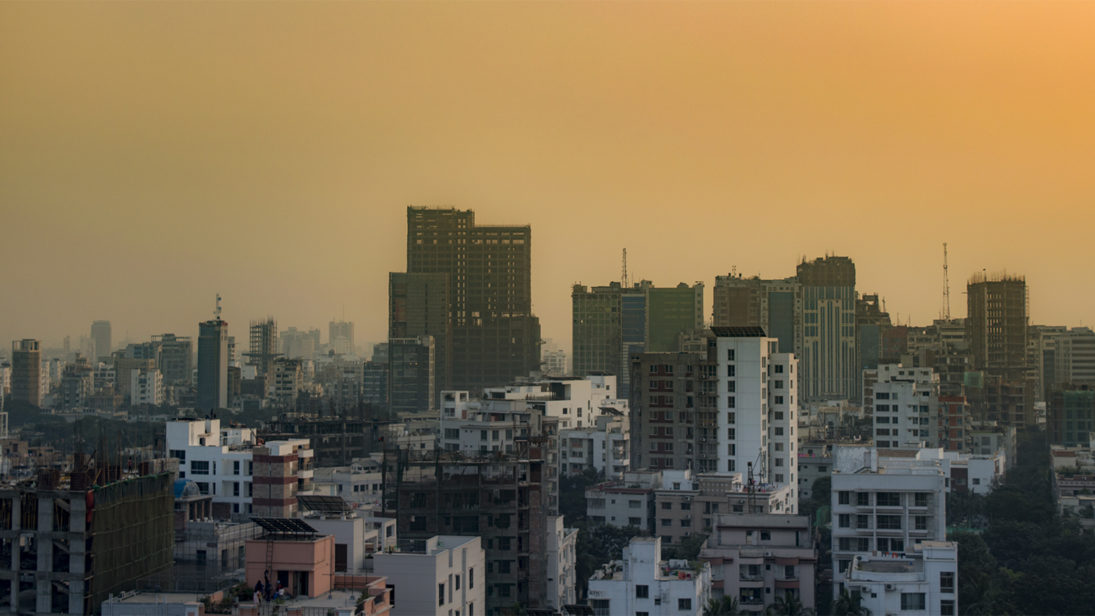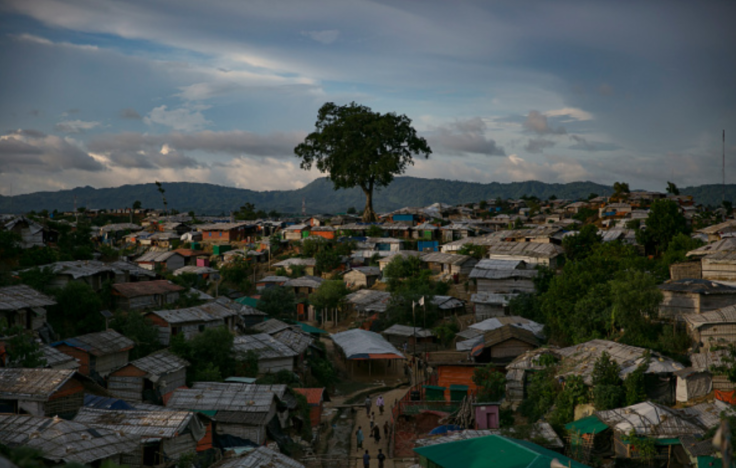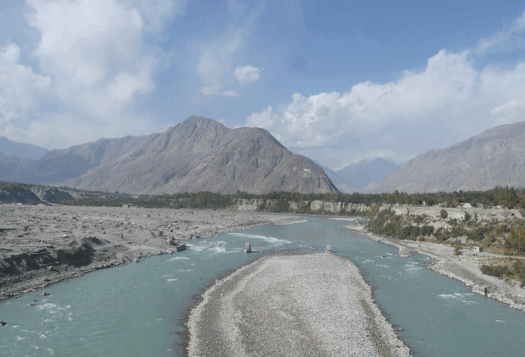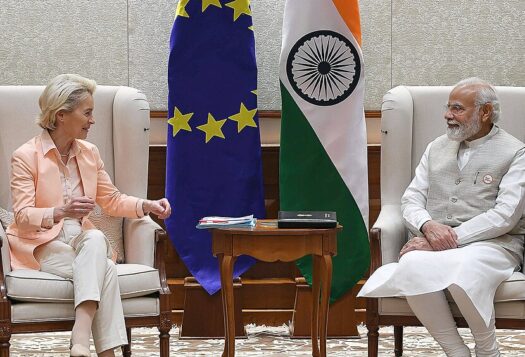
While the world grapples with the containment of the COVID-19 outbreak, Bangladesh has been caught napping as the country struggles to track and test for the disease despite having a three-month head start since the outbreak began in China. The country is not alien to viral outbreaks, having suffered its worst recorded case of Dengue outbreak in 2019. The COVID-19 pandemic, however, stands to impact Bangladesh in unprecedented ways, unraveling the cracks in its economy and undoing its remarkable economic progress of recent decades.
Bangladesh’s Response
Having registered its first case of COVID-19 on March 8, Bangladesh has seen 39 positive cases and 5 deaths as of March 25. While the numbers seem low compared to global figures, they are hardly representative as the country has barely been able to test potential cases with only 1,500 testing kits at its disposal. The government has consequently been forced to limit the scope of testing to those returning from international travel or who have been in contact with in-bound travelers.
While the numbers seem low compared to global figures, they are hardly representative as the country has been barely able to test potential cases with only 1,500 testing kits at its disposal.
However, the strategy is only masking the true number of cases as the country’s second death was likely through community transmission. The collateral impact has been alarming as doctors fear unknowingly coming into contact with infected patients, with reports suggesting coronavirus concerns have contributed to a patient’s death while others were refused treatment due to a lack of protective medical equipment. While further help is on its way through support from Alibaba founder Jack Ma, China, and the production of locally-developed testing kits, it is increasingly becoming evident that Bangladesh has been too late in its efforts and an upsurge in cases may be on the way.
Bangladesh is one of the most densely-populated countries in the world, with Dhaka, the nation’s capital, housing 47,400 people per square kilometer. The World Health Organization (WHO)-recommended “social distancing” and house quarantine may have little impact in the country’s packed slums, signaling a grim picture if the COVID-19 virus spreads at its current rate in Europe and America. The one million Rohingyas housed in the densely-packed refugee camps of Cox’s Bazar are also in great danger if the disease were to spread there.

Economic Fallout
Despite high GDP growth projections, Bangladesh went into 2020 with some ominous cracks in its economy. The amount of non-performing loans in the country’s fragile banking sector has risen to 4.43 percent of the GDP, while the country’s fiscal deficit rose to around USD $13 billion in FY 18-19—the highest in 11 years. The COVID-19 outbreak could further expose these vulnerabilities as the Asian Development Bank (ADB) estimates a worst-case economic reduction of 1.1 percent—equivalent to USD $3 billion.
The key driver of Bangladesh’s economic growth over the last few decades has been the Ready-Made Garments (RMG) sector, which constitutes of almost 84 percent of the country’s exports, employing 4.5 million people. Ongoing lockdowns due to the COVID-19 outbreak in export-destination regions such as America and Europe have already caused buyers to cancel or postpone orders to the amount of USD $1.5 billion, which is likely to increase further. Foreign remittances have been another important driver of Bangladesh’s growth as 10 million Bangladeshis working abroad sent USD $18 billion in FY 2018-19. Remittances are expected to take a significant hit as the countries with some of the highest Bangladeshi migrants such as Saudi Arabia, Italy, United States, bear the toll of COVID-19.
Much like the rest of the world, the stock market has been on a free fall, wiping out around USD $5.22 billion in the last week alone, forcing the Bangladesh Securities and Exchange Commission to institute a circuit breaker to curb the slide – halting trading if prices fell below a certain level. Furthermore, despite the government’s market monitoring efforts, prices of essential goods such as rice, eggs, onions, chicken etc. have shot up, and are likely to continue rising as the outbreak spreads and the country prepares for Ramadan in April.
With a significant portion of the population living hand-to-mouth, an impending lockdown to begin on March 26, and the consequent economic stagnation risk pushing a large number of families back into poverty, which Bangladesh has fought to get out of over the past few decades. While the government is expected to come up with a financial stimulus package, its efficacy for those in need remains a looming question for a country that has long struggled with governance and corruption.
Political & Security Impact
While the public perception of the government’s handling of COVID-19 is yet to be determined, there is growing discontent on the government’s inaction to stem the spread earlier or be prepared with adequate testing kits and protective equipment. However, the political fallout is unlikely to be significant for the current Awami League government, which only 15 months ago won the national elections by a landslide margin against a weak opposition that is still largely inactive amidst the outbreak. On the regional front, COVID-19 has temporarily revived the South Asian Association for Regional Cooperation (SAARC) with leaders from the eight South Asian nations joining in a teleconference to set up an emergency fund where Bangladesh has pledged to contribute USD $1.5 million. However, Bangladesh’s relationship with its neighbors, primarily India, which has been heated in recent times due to disputes over the National Register of Citizens (NRC) in the bordering Indian state of Assam, will truly be tested during the COVID-19 recovery phase, as economies take critical measures to lift themselves out of the impending recession.
The government has already struggled to clamp down on mass religious gatherings in the country, with a mass prayer event of 10,000 people being held on March 18. Religious scholars in rural areas have vehemently protested against the government’s calls discouraging mass religious gatherings.
While political fallout may not haunt Sheikh Hasina during this crisis, there are major security concerns over dealing with the large number of low-income earners who will be impacted by government efforts to curb the spread of the virus. The government has already struggled to clamp down on mass religious gatherings in the country, with a mass prayer event of 10,000 people being held on March 18. Religious scholars in rural areas have vehemently protested against the government’s calls discouraging mass religious gatherings. Such dissent, together with large impoverished population ending up without income for a sustained period, poses a key security threat for Bangladesh.
An economic hit from the COVID-19 pandemic is inevitable for Bangladesh, as its key global trading chains continue to get disrupted. However, the health and financial fallout on Bangladesh’s lower-income population may be much higher, unless the government takes swift preemptive measures to trace and curb the spread, and provide financial cushion to the affected. Otherwise, the virus stands to undo the substantial progress the government has made over the last decade.
Editor’s Note: SAV contributors analyze how governments in the region are responding to the spread of COVID-19, as well as the potential far-reaching economic and security impacts of the pandemic. Read the entire series here.
***
Image 1: ASaber91 via Flickr
Image 2: Allison Joyce via Getty Images


